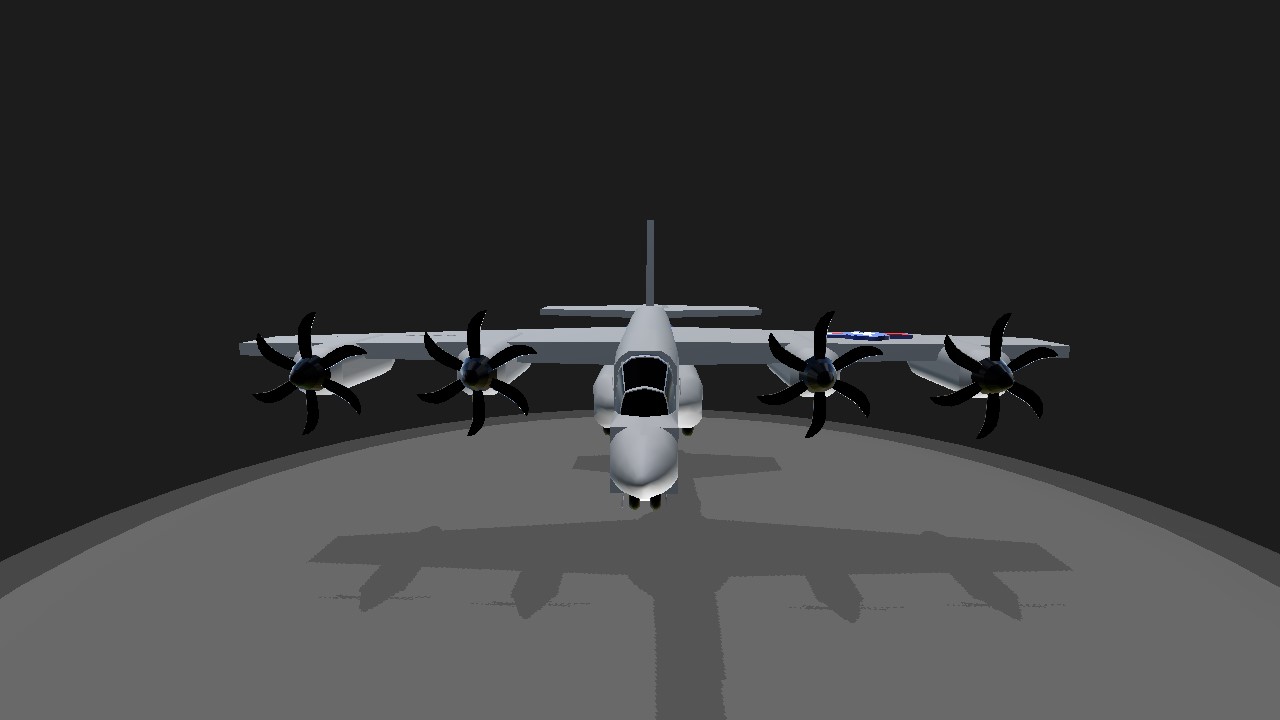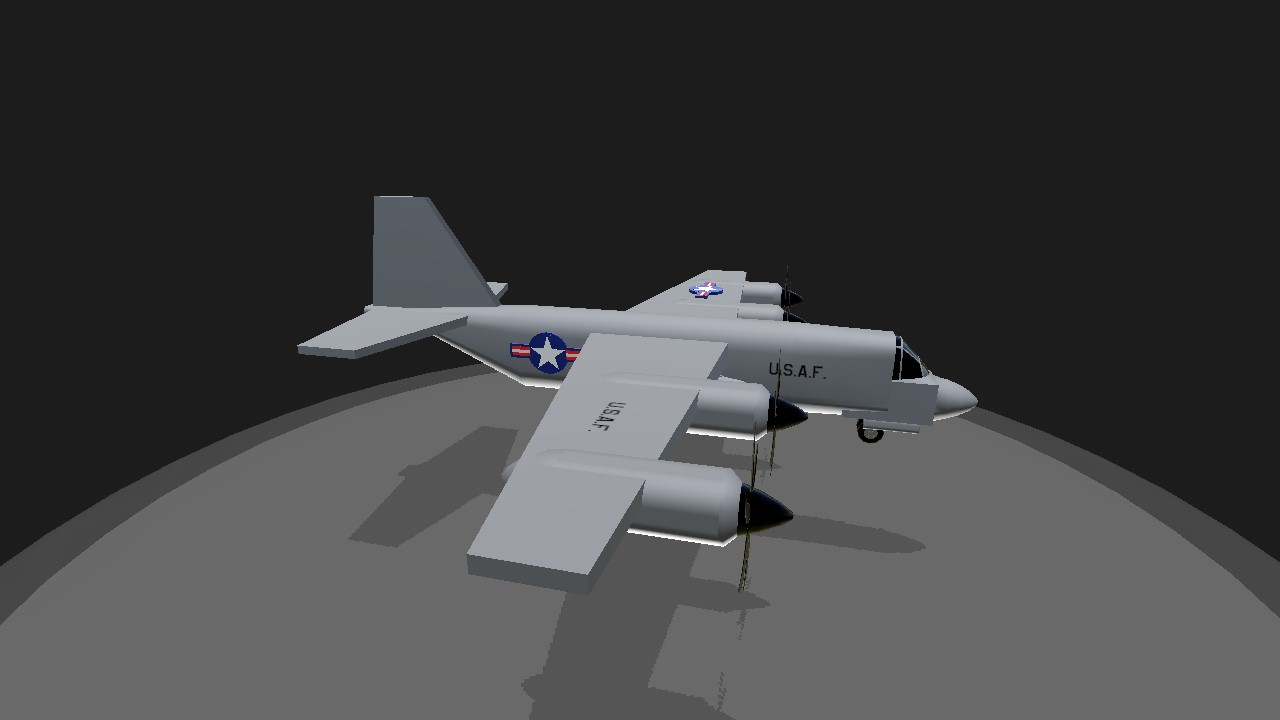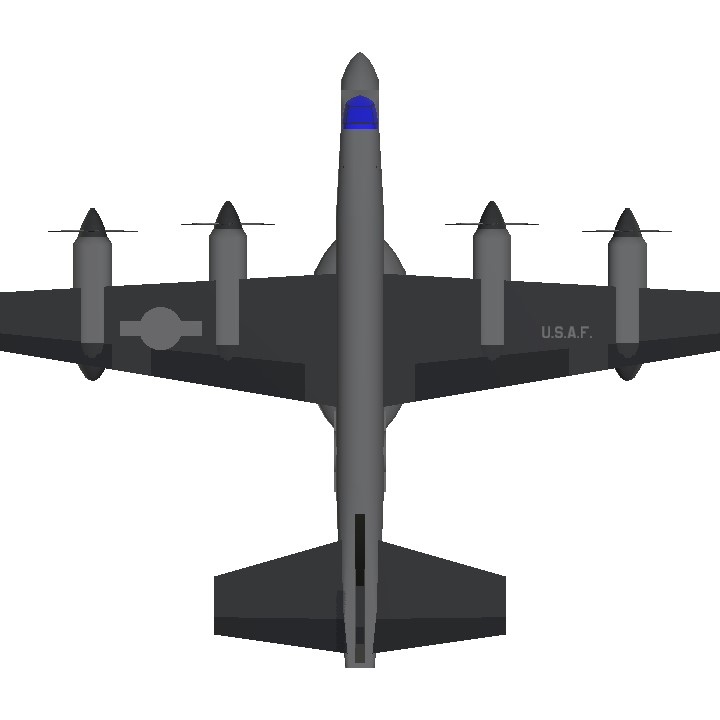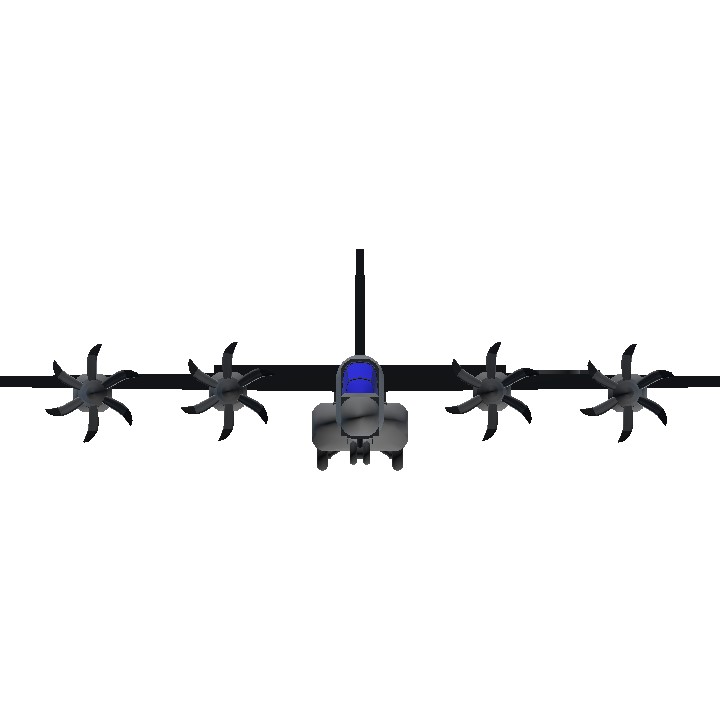the aircraft to the Argentine Air Force through the Georgia Air National Guard since June 2023.[citation needed]
Deepwater Horizon Oil Spill
A U.S. Air Force C-130 Hercules aircraft from the 910th Airlift Wing, Youngstown-Warren Air Reserve Station, Ohio, drops oil-dispersing chemicals into the Gulf of Mexico, 9 May 2010.
For almost two decades, the USAF 910th Airlift Wing's 757th Airlift Squadron and the U.S. Coast Guard have participated in oil spill cleanup exercises to ensure the U.S. military has a capable response in the event of a national emergency. The 757th Airlift Squadron operates the DOD's only fixed-wing Aerial Spray System which was certified by the EPA to disperse pesticides on DOD property to spread oil dispersants onto the Deepwater Horizon oil spill in the Gulf Coast in 2010.[65]
During the 5-week mission, the aircrews flew 92 sorties and sprayed approximately 30,000 acres with nearly 149,000 gallons of oil dispersant to break up the oil. The Deepwater Horizon mission was the first time the US used the oil dispersing capability of the 910th Airlift Wing—its only large area, fixed-wing aerial spray program—in an actual spill of national significance.[66] The Air Force Reserve Command announced the 910th Airlift Wing has been selected as a recipient of the Air Force Outstanding Unit Award for its outstanding achievement from 28 April 2010 through 4 June 2010.[67]
Hurricane Harvey (2017)
Illinois Air National Guard crews assisting with Hurricane Harvey relief load supplies aboard a C-130
C-130s temporarily based at Kelly Field conducted mosquito control aerial spray applications over areas of eastern Texas devastated by Hurricane Harvey. This special mission treated more than 2.3 million acres at the direction of Federal Emergency Management Agency (FEMA) and the Texas Department of State Health Services (DSHS) to assist in recovery efforts by helping contain the significant increase in pest insects caused by large amounts of standing, stagnant water. The 910th Airlift Wing operates the Department of Defense's only aerial spray capability to control pest insect populations, eliminate undesired and invasive vegetation, and disperse oil spills in large bodies of water.[68]
The aerial spray flight also is now able to operate during the night with NVGs, which increases the flight's best case spray capacity from approximately 60 thousand acres per day to approximately 190 thousand acres per day. Spray missions are normally conducted at dusk and nighttime hours when pest insects are most active, the U.S. Air Force Reserve reports.[69]
Aerial firefighting
A C-130E fitted with a MAFFS-1 dropping fire retardant.
Globe icon.
The examples and perspective in this section deal primarily with US and do not represent a worldwide view of the subject. You may improve this section, discuss the issue on the talk page, or create a new section, as appropriate. (November 2023) (Learn how and when to remove this message)
In the early 1970s, Congress authorized the Modular Airborne Firefighting System (MAFFS), a joint operation between the U.S. Forest Service and the Department of Defense. MAFFS is roll-on/roll-off device that allows C-130s to be temporarily converted into a 3,000-gallon airtanker for fighting wildfires when demand exceeds the supply of privately contracted and publicly available airtankers.[70]
In the late 1980s, 22 retired USAF C-130As were removed from storage and transferred to the U.S. Forest Service, which then transferred them to six private companies to be converted into airtankers. One of these C-130s crashed in June 2002 while operating near Walker, California. The crash was attributed to wing separation caused by fatigue stress cracking and contributed to the grounding of the entire large aircraft fleet.[71] After an extensive review, US Forest Service and the Bureau of Land Management declined to renew the leases on nine C-130A over concerns about the age of the aircraft, which had been in service since the 1950s, and their ability to handle the forces generated by aerial firefighting.[citation needed]
More recently, an updated Retardant Aerial Delivery System known as RADS XL was developed by Coulson Aviation USA. That system consists of a C-130H/Q retrofitted with an in-floor discharge system, combined with a removable 3,500- or 4,000-gallon water tank. The combined system is FAA certified.[72] On 23 January 2020, Coulson's Tanker 134, an EC-130Q registered N134CG, crashed during aerial firefighting operations in New South Wales, Australia, killing all three crew members. The aircraft had taken off out of RAAF Base Richmond and was supporting firefighting operations during Australia's 2019–20 fire season.[73]
Variants
This section needs additional citations for verification. Please help improve this article by adding citations to reliable sources in this section. Unsourced material may be challenged and removed. (February 2014) (Learn how and when to remove this message)
C-130A of the South Vietnam Air Force
Bangladesh Air Force C-130B
C-130E of the Islamic Republic of Iran Air Force
A United States Coast Guard HC-130J
A Mexican Air Force C-130K
A U.S. JC-130 aircraft retrieving a reconnaissance satellite film capsule under parachute.
RAAF C-130J-30 at Point Cook, 2006
For civilian versions, see Lockheed L-100 Hercules.
Significant military variants of the C-130 include:
C-130A
Initial production model with four Allison T56-A-11/9 turboprop engines. 219 were ordered and deliveries to the USAF began in Dec. 1956.
C-130B
Variant with four Allison T56-A-7 engines. 134 were ordered and entered USAF service in May 1959.
C-130E
Same engines as the C-130B but with two 1,290 U.S. gal (4,900 L; 1,070 imp gal) external fuel tanks, and an increased maximum takeoff weight capability. Introduced in Aug. 1962 with 389 were ordered.
C-130F/G
Variants procured by the U.S. Navy for Marine Corps refueling missions, and other support/transport operations.
C-130H
Identical to the C-130E but with more powerful Allison T56-A-15 turboprop engines. Introduced in Jun. 1974 with 308 ordered.
C-130K
Designation for RAF Hercules C1/W2/C3 aircraft (C-130Js in RAF service are the Hercules C.4 and Hercules C.5)
C-130T
Improved variants procured by the U.S. Navy for Marine Corps refueling, and other support/transport operations.
C-130A-II Dreamboat
Early version Electronic Intelligence/Signals Intelligence (ELINT/SIGINT) aircraft[74]
C-130J Super Hercules
Tactical airlifter, with new engines, avionics, and updated systems
C-130B BLC
A one-off conversion of C-130B 58–0712, modified with a double Allison YT56 gas generator pod under each outer wing, to provide bleed air for all the control surfaces and flaps.[75]
AC-130A/E/H/J/U/W
Gunship variants
C-130D/D-6
Ski-equipped version for snow and ice operations United States Air Force / Air National Guard
CC-130E/H/J Hercules
Designation for Canadian Armed Forces / Royal Canadian Air Force Hercules aircraft.[76] U.S. Air Force used the CC-130J designation to differentiate the standard C-130J variant from the "stretched" C-130J (company designation C-130J-30). CC-130H(T) is the Canadian tanker variant of the KC-130H.[77]
C-130M
Designation used by the Brazilian Air Force for locally modified C-130H aircraft.[78]
DC-130A/E/H
USAF and USN Drone control
EC-130
EC-130E/J Commando Solo – USAF / Air National Guard psychological operations version
EC-130E Airborne Battlefield Command and Control Center (ABCCC) – USAF procedural air-to-ground attack control, also provided NRT threat updates
EC-130E Rivet Rider – Airborne psychological warfare aircraft
EC-130H Compass Call – Electronic warfare and electronic attack.[79]
EC-130V – Airborne early warning and control (AEW&C) variant used by USCG for counter-narcotics missions[80]
GC-130
Permanently grounded instructional airframes
HC-130
HC-130B/E/H – Early model combat search and rescue
HC-130P/N Combat King – USAF aerial refueling tanker and combat search and rescue
HC-130J Combat King II – Next generation combat search and rescue tanker
HC-130H/J – USCG long-range surveillance and search and rescue, USAFR Aerial Spray & Airlift
JC-130
Temporary conversion for flight test operations; used to recover drones and spy satellite film capsules.
KC-130F/R/T/J
United States Marine Corps aerial refueling tanker and tactical airlifter
LC-130F/H/R
USAF / Air National Guard – Ski-equipped version for Arctic and Antarctic support operations; LC-130F and R previously operated by USN
MC-130
MC-130E/H Combat Talon I/II – Special operations infiltration/extraction variant
MC-130W Combat Spear/Dragon Spear – Special operations tanker/gunship[81]
MC-130P Combat Shadow – Special operations tanker – all operational aircraft converted to HC-130P standard
MC-130J Commando II (formerly Combat Shadow II) – Special operations tanker Air Force Special Operations Command[82]
YMC-130H – Modified aircraft under Operation Credible Sport for second Iran hostage crisis rescue attempt
NC-130
Permanent conversion for flight test operations
PC-130/C-130-MP
Maritime patrol
RC-130A/S
Surveillance aircraft for reconnaissance
SC-130J Sea Herc
Proposed maritime patrol version of the C-130J, designed for coastal surveillance and anti-submarine warfare.[83][84]
TC-130
Aircrew training
VC-130H
VIP transport
WC-130A/B/E/H/J
Weather reconnaissance ("Hurricane Hunter") version for USAF / Air Force Reserve Command's 53d Weather Reconnaissance Squadron in support of the National Weather Service's National Hurricane Center
C-130(EM/BM) Erciyes
Turkey's Erciyes modernization program covers modernization of the avionics of C-130B/E variants of the aircraft. In scope of modernization the aircraft is equipped with Digital Cockpit (four-color Multifunctional Display with moving map capability-MFD), two Central Display Units (CDU) and two multifunction Central Control Computers compatible with international navigational requirements, as well as with a multifunction Mission Computer with high operational capability, Flight Management System (FMS), Link-16, Ground Mission Planning Unit compatible with the Air Force Information System, and display and lighting systems compatible with Night Vision Goggles. Other components such as GPS, indicator, anti-collision system, air radar, advanced military and civilian navigation systems, night-time invisible lighting for military missions, black box voice recorder, communication systems, advanced automated flight systems (military and civilian), systems enabling operation in the military network, digital moving map and ground mission planning systems are also included.[85]
Operators
Military operators of C-130 Hercules aircraft;
Current operators
Former operators
A Republic of China Air Force C-130H, 2011
A Philippine Air Force C-130H, 2021
A Royal New Zealand Air Force C-130H, 2019
United States Navy C-130T, 2013
Main article: List of C-130 Hercules operators
Afghanistan
Algeria
Argentina
Australia
Austria
Bangladesh
Bolivia
Botswana
Cameroon
Canada
Chad
Chile
Taiwan
Colombia
Denmark
Ecuador
Egypt
Ethiopia
France
Gabon
Germany[86]
Greece
Honduras
India
Indonesia
Iran
Iraq
Israel
Italy
Japan
Jordan
Kuwait
Liberia
Libya
Malaysia
Mexico
Morocco
Netherlands
New Zealand
Niger
Nigeria
Norway
Oman
Pakistan
Peru
Philippines
Poland
Portugal
Romania
Saudi Arabia
Singapore
South Africa
South Korea
Sri Lanka
Sudan
Sweden
Thailand
Tunisia
Turkey
United Arab Emirates
United States
Uruguay
Venezuela
Yemen
Zambia
Former operators
Angola
Belgium
Brazil
North Yemen
Pahlavi Iran
South Vietnam
Zaire
Spain
United Kingdom
Accidents
Main article: List of accidents and incidents involving the Lockheed C-130 Hercules
The C-130 Hercules has had a low accident rate in general. The Royal Air Force recorded an accident rate of about one aircraft loss per 250,000 flying hours over the last 40 years, placing it behind Vickers VC10s and Lockheed TriStars with no flying losses.[87] USAF C-130A/B/E-models had an overall attrition rate of 5% as of 1989 as compared to 1–2% for commercial airliners in the U.S., according to the NTSB, 10% for B-52 bombers, and 20% for fighters (F-4, F-111), trainers (T-37, T-38), and helicopters (H-3).[88]
Aircraft on display
Argentina
C-130B FAA TC-60. ex USAF 61-0964 received in February 1992 now at Museo Nacional de Aeronáutica since September 2011.[89]
Australia
C-130A RAAF A97-214 used by 36 Squadron from early 1959, withdrawn from use late 1978; now at RAAF Museum, RAAF Base Williams, Point Cook.[90]
C-130E RAAF A97-160 used by 37 Squadron from August 1966, withdrawn from use November 2000; to RAAF Museum, 14 November 2000, cocooned as of September 2005.[91]
Belgium
C-130H Belgian Airforce tailnumber CH13 in service from 2009 until May 2021 is on display at the Beauvechain Air Base at the First Wing Historical Center.[92]
Brazil
C-130H Brazilian Air Force FAB-2453 is on display at the Museu Aeroespacial in Rio de Janeiro since 2014.[93]
Canada
CC-130E RCAF 10313 (later 130313) is on display at the National Air Force Museum of Canada, CFB Trenton[94]
CC-130E RCAF 10307 (later 130307) is on display in the Reserve Hangar at the Canada Aviation and Space Museum, Ottawa, Ontario[95]
CC-130E RCAF 130328 is on display at the Greenwood Aviation Museum, CFB Greenwood[96]
Colombia
C-130B FAC 1010 (serial number 3521) moved on 14 January 2016 to the Colombian Aerospace Museum in Tocancipá, Cundinamarca, for static display.[97]
C-130B FAC1011 (serial number 3585, ex 59–1535) preserved at the Colombian Air and Space Museum within CATAM AFB, Bogotá.[98]
Indonesia
C-130B Indonesian Air Force A-1301 preserved at Sulaeman Airstrip, Bandung. Also occasionally used for Paskhas Training. The airplane is relocated to Air Force Museum in Yogyakarta in 2017.[99]
Norway
C-130H Royal Norwegian Air Force 953 was retired on 10 June 2007 and moved to the Air Force museum at Oslo Gardermoen in May 2008.[100]
Philippines
C-130B 4512 Philippine Air Force on display at Mactan Air Base aircraft park.[citation needed]
Saudi Arabia
C-130 at the Royal Saudi Air Force Museum
C-130H RSAF 460 was operated by 4 Squadron Royal Saudi Air Force from December 1974 until January 1987. It was damaged in a fire at Jeddah in December 1989. Restored for ground training by August 1993. At Royal Saudi Air Force Museum, November 2002, restored for ground display by using a tail from another C-130H.[101]
United Kingdom
Hercules C3 XV202 that served with the Royal Air Force from 1967 to 2011, is on display at the Royal Air Force Museum Cosford.[102]
United States
GC-130A, AF Ser. No. 55-037 used by the 773 TCS, 483 TCW, 315 AD, 374 TCW, 815 TAS, 35 TAS, 109 TAS, belly-landed at Duluth, Minnesota, April 1973, repaired; 167 TAS, 180 TAS, to Chanute Technical Training Center as GC-130A, May 1984; now displayed at Museum of Missouri Military History, Missouri National Guard Ike Skelton Training Center, Jefferson City, Missouri. Previously displayed at Octave Chanute Aerospace Museum, (former) Chanute AFB, Rantoul, Illinois until museum closed.[103][104]
C-130A, AF Ser. No. 56-0518 used by the 314 TCW, 315 AD, 41 ATS, 328 TAS; to Republic of Vietnam Air Force 435 Transport Squadron, November 1972; holds the C-130 record for taking off with the most personnel on board, during the evacuation of SVN, 29 April 1975, with 452. Returned to USAF, 185 TAS, 105 TAS; Flown to Little Rock AFB on 28 June 1989. It was converted to a static display at the LRAFB Visitor Center, Arkansas by Sept. 1989.[105]
C-130A, AF Ser. No. 57-0453 was operated from 1958 to 1991, last duty with 155th TAS, 164th TAG, Tennessee Air National Guard, Memphis International Airport/ANGB, Tennessee, 1976–1991, named "Nite Train to Memphis"; to AMARC in December 1991, then sent to Texas for modification into a replica of C-130A-II Dreamboat aircraft, AF Ser. No. 56-0528, shot down by Soviet fighters in Soviet airspace near Yerevan, Armenia on 2 September 1958, while on ELINT mission with loss of all crew, displayed in National Vigilance Park, National Security Agency grounds, Fort George Meade, Maryland.[106]
C-130B, AF Ser. No. 59-0528 was operated by 145th Airlift Wing, North Carolina Air National Guard; placed on static display at Charlotte Air National Guard Base, North Carolina in 2010.[107]
C-130D, AF Ser. No. 57-0490 used by the 61st TCS, 17th TCS, 139th TAS with skis, July 1975 – April 1983; to MASDC, 1984–1985, GC-130D ground trainer, Chanute AFB, Illinois, 1986–1990; When Chanute AFB closed in September 1993, it moved to the Octave Chanute Aerospace Museum (former Chanute AFB), Rantoul, Illinois. In July 1994, it moved to the Empire State Air Museum, Schenectady County Airport, New York, until placed on the gate at Stratton Air National Guard Base in October 1994.[108]
NC-130B, AF Ser. No. 57-0526 was the second B model manufactured, initially delivered as JC-130B; assigned to 6515th Organizational Maintenance Squadron for flight testing at Edwards AFB, California on 29 November 1960; turned over to 6593rd Test Squadron's Operating Location No. 1 at Edwards AFB and spent next seven years supporting Corona Program; "J" status and prefix removed from aircraft in October 1967; transferred to 6593rd Test Squadron at Hickam AFB, Hawaii and modified for mid-air retrieval of satellites; acquired by 6514th Test Squadron at Hill AFB, Utah in Jan. 1987 and used as electronic testbed and cargo transport; aircraft retired January 1994 with 11,000+ flight hours and moved to Hill Aerospace Museum at Hill AFB by January 1994.[109]
C-130E, AF Ser. No. 62-1787, on display at the National Museum of the United States Air Force, Wright-Patterson AFB, Ohio, was flown to the museum on 18 August 2011. One of the greatest feats of heroism during the Vietnam War involved the C-130E, call sign "Spare 617".[N 2] The C-130E attempted to airdrop ammunition to surround South Vietnamese forces at An Loc, Vietnam. Approaching the drop zone, Spare 617 received heavy enemy ground fire that damaged two engines, ruptured a bleed air duct in the cargo compartment, and set the ammunition on fire. Flight engineer TSgt Sanders was killed, and navigator 1st Lt Lenz and co-pilot 1st Lt Hering were both wounded. Despite receiving severe burns from hot air escaping from the damaged air bleed duct, loadmaster TSgt Shaub extinguished a fire in the cargo compartment, and successfully jettisoned the cargo pallets, which exploded in mid-air. Despite losing a third engine on the final approach, pilot Capt Caldwell landed Spare 617 safely. For their actions, Caldwell and Shaub received the Air Force Cross, the U.S. Air Force's second highest award for valor. TSgt Shaub also received the William H. Pitsenbarger Award for Heroism from the Air Force Sergeants Association.[110]
KC-130F, USN/USMC BuNo 149798 used in tests in October–November 1963 by the U.S. Navy for unarrested landings and unassisted take-offs from the carrier USS Forrestal (CV-59), it remains the record holder for largest aircraft to operate from a carrier flight deck, and carried the name "Look Ma, No Hook" during the tests. Retired to the National Museum of Naval Aviation, NAS Pensacola, Florida in May 2003.[111]
C-130G, USN/USMC BuNo 151891; modified to EC-130G, 1966, then testbed for EC-130Q TACAMO in 1981, then changed to TC-130G and used by Fleet Air Reconnaissance Squadron Three (VQ-3) for flight proficiency (bounce bird). In early 1991 it was transferred to AMMARG Davis-Monthan AFB Tucson, AZ. In May 1991 it was assigned as the U.S. Navy's Blue Angels USMC support aircraft, serving as "Fat Albert Airlines" from 1991 to 2002. Retired to the National Museum of Naval Aviation at NAS Pensacola, Florida in November 2002 where it remains on outside static display reflecting the BLUES colors.[57]
C-130E, AF Ser. No. 64-0525 was on display at the 82nd Airborne Division War Memorial Museum at Fort Liberty, North Carolina. The aircraft was the last assigned to the 43rd AW at Pope AFB, North Carolina before retirement from the USAF.[112]
C-130E-LM, AF Ser. No. 64-0533 – Taken in December 1964 by 314th Troop Carrier Wing, Sewart AFB, TN. Last assigned to 37th Airlift Squadron, Rhein-Main AB, Germany. Transferred to Elmendorf AFB for display, May 2004. Marked as 53-2453[113]
C-130E, AF Ser. No. 69-6579 operated by the 61st TAS, 314th TAW, 50th AS, 61st AS; at Dyess AFB as maintenance trainer as GC-130E, March 1998; to Dyess AFB Linear Air Park, January 2004.[114]
MC-130E Combat Talon I, AF Ser. No. 64-0567, unofficially known as "Wild Thing". It transported captured Panamanian dictator Manuel Noriega in 1989 during Operation Just Cause and participated in Operation Eagle Claw, the unsuccessful attempt to rescue U.S. hostages from Iran in 1980. Wild Thing was also the first fixed-wing aircraft to employ night-vision goggles. On display at Hurlburt Field, in Florida.[115]
C-130E, AF Ser. No. 69-6580 operated by the 61st TAS, 314th TAW, 317th TAW, 314th TAW, 317th TAW, 40th AS, 41st AS, 43rd AW, retired after center wing cracks were detected in April 2002; to the Air Mobility Command Museum, Dover AFB, Delaware on 2 February 2004.[114]
C-130E, AF Ser. No. 70-1269 was used by the 43rd AW and is on display at the Pope Air Park, Pope AFB, North Carolina as of 2006.[116]
C-130H, AF Ser. No. 74-1686 used by the 463rd TAW; one of three C-130H airframes modified to YMC-130H for an aborted rescue attempt of Iranian hostages, Operation Credible Sport, with rocket packages blistered onto fuselage in 1980, but these were removed after the mission was canceled. Subsequent duty with the 4950th Test Wing, then donated to the Museum of Aviation at Robins AFB, Georgia, in March 1988.[117]
C-130H, AF Ser. No. 88-4401 operated by the Ohio 179th Airlift Wing has been retired and is on display at the MAPS Air Museum in Canton, Ohio[118]
Specifications (C-130H)
C-130H Hercules flight deck
A Hercules deploying flares, sometimes referred to as Angel Flares due to the characteristic pattern
Cargo compartment of a Swedish Air Force C-130
Data from USAF C-130 Hercules fact sheet,[119] International Directory of Military Aircraft,[120] Complete Encyclopedia of World Aircraft,[121] and Encyclopedia of Modern Military Aircraft.[122]
General characteristics
Crew: 5 (2 pilots, CSO/navigator, flight engineer and loadmaster)
Capacity: 42,000 lb (19,000 kg) payload
C-130E/H/J cargo hold: length, 40 ft (12.19 m); width, 9 ft 11 in (3.02 m); height, 9 ft (2.74 m). Rear ramp: length, 123 in (3.12 m); width, 119 in (3.02 m)
C-130J-30 cargo hold: length, 55 ft (16.76 m); width, 9 ft 11 in (3.02 m); height, 9 ft (2.74 m). Rear ramp: length, 123 inches (3.12 m); width, 119 in (3.02 m)
92 passengers or
64 airborne troops or
74 litter patients with 5 medical crew or
6 pallets or
2–3 Humvees or
2 M113 armored personnel carriers
1 CAESAR self-propelled howitzer
Length: 97 ft 9 in (29.79 m)
Wingspan: 132 ft 7 in (40.41 m)
Height: 38 ft 3 in (11.66 m)
Wing area: 1,745 sq ft (162.1 m2)
Airfoil: root: NACA 64A318; tip: NACA 64A412[123]
Empty weight: 75,800 lb (34,382 kg)
Max takeoff weight: 155,000 lb (70,307 kg)
Powerplant: 4 × Allison T56-A-15 turboprop engines, 4,590 shp (3,420 kW) each
Propellers: 4-bladed Hamilton Standard 54H60 constant-speed fully feathering reversible propellers, 13 ft 6 in (4.11 m) diameter [124]
Performance
Maximum speed: 320 kn (370 mph, 590 km/h) at 20,000 ft (6,100 m)
Cruise speed: 292 kn (336 mph, 541 km/h)
Range: 2,050 nmi (2,360 mi, 3,800 km)
Ferry range: 3,995 nmi (4,597 mi, 7,399 km)
Service ceiling: 33,000 ft (10,000 m) empty[125]
23,000 ft (7,000 m) with 42,000 lb (19,000 kg) payload
Rate of climb: 1,830 ft/min (9.3 m/s)
Takeoff distance: 3,586 ft (1,093 m) at 155,000 lb (70,307 kg) max gross weight;[122]
1,400 ft (427 m) at 80,000 lb (36,287 kg) gross weight[126]
Avionics
Westinghouse Electronic Systems AN/APN-241 weather and navigational radar[127]
See also
Aviation portal
Related development
Lockheed AC-130
Lockheed DC-130
Lockheed EC-130
Lockheed EC-130H Compass Call
Lockheed HC-130
Lockheed L-100 Hercules
Lockheed LC-130
Lockheed Martin C-130J Super Hercules
Lockheed Martin KC-130
Lockheed MC-130
Lockheed RC-130
Lockheed WC-130
Aircraft of comparable role, configuration, and era
Antonov An-12
Armstrong Whitworth AW.660 Argosy
Blackburn Beverley
Shaanxi Y-8
Kawasaki C-1
Short Belfast
Transall C-160
Related lists
List of accidents and incidents involving the Lockheed C-130 Hercules
List of non-carrier aircraft flown from aircraft carriers
List of United States military aerial refueling aircraft
List of military electronics of the United States
Specifications
General Characteristics
- Created On Android
- Wingspan 30.7ft (9.3m)
- Length 26.2ft (8.0m)
- Height 9.2ft (2.8m)
- Empty Weight 7,665lbs (3,476kg)
- Loaded Weight 9,419lbs (4,272kg)
Performance
- Horse Power/Weight Ratio 0.424
- Wing Loading 50.7lbs/ft2 (247.7kg/m2)
- Wing Area 185.7ft2 (17.3m2)
- Drag Points 2479
Parts
- Number of Parts 60
- Control Surfaces 7
- Performance Cost 421






